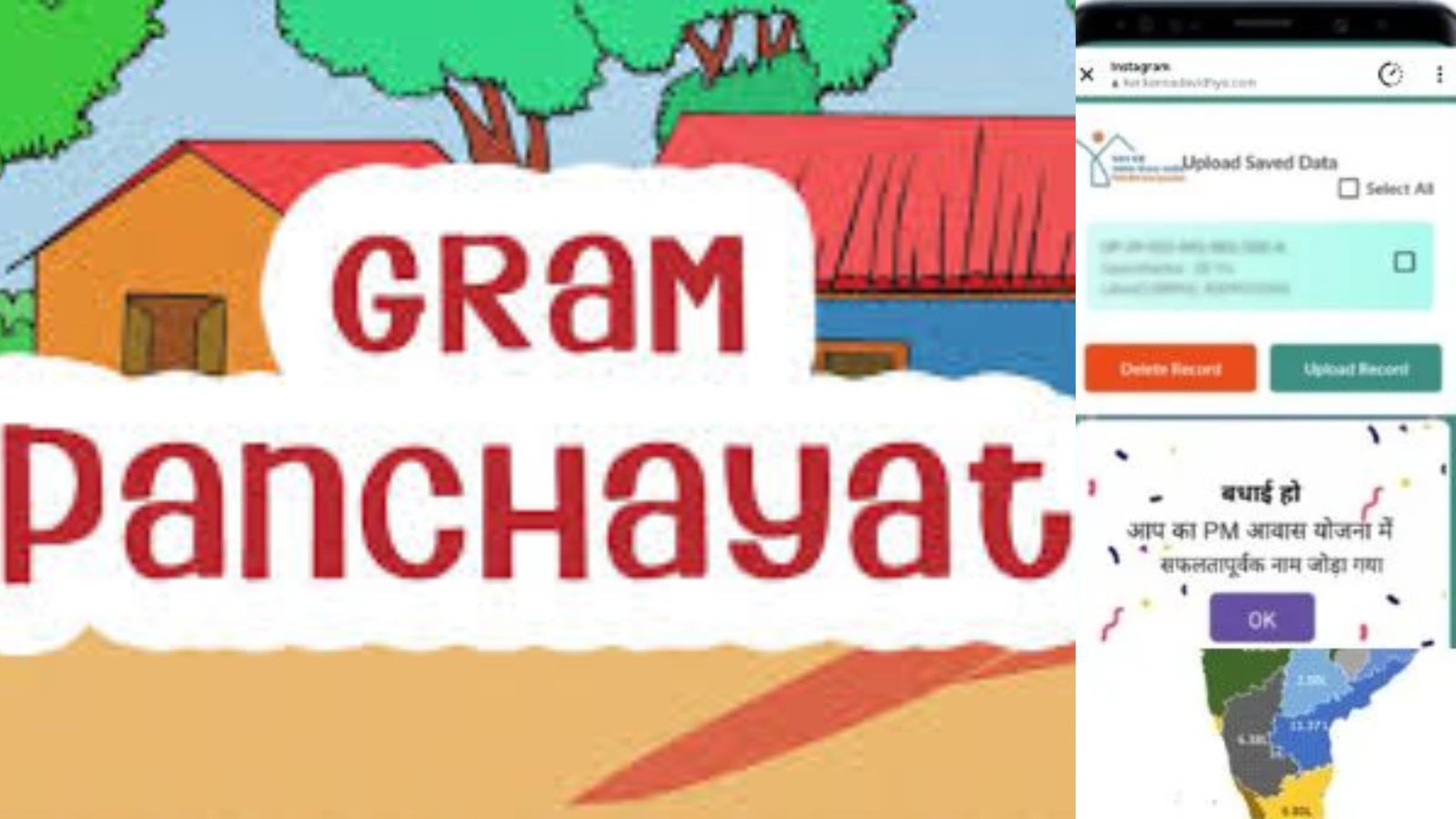How to Check Gram Panchayat Schemes, Beneficiary Lists, and Financial Records Online (2025 Updated Guide)
India’s rural development hinges on the transparency and efficiency of Gram Panchayats—local self-governing bodies that implement key welfare schemes at the village level. With the rise of digital governance, it is now easier than ever for citizens to check various Gram Panchayat-related details online, including government schemes, beneficiary lists, income, and expenditure.
This 2025 step-by-step guide explains how to access all this information using platforms like eGramSwaraj, AwaasSoft, NREGA, and more.
What is a Gram Panchayat?
A Gram Panchayat is the grassroots-level administrative body responsible for managing the development and welfare of a village or a group of villages. It plays a vital role in implementing schemes related to:
-
Housing (PMAY-G)
-
Employment (MGNREGA)
-
Sanitation (Swachh Bharat Mission)
-
Water supply (Jal Jeevan Mission)
-
Roads, schools, and public infrastructure
The Ministry of Panchayati Raj has made it mandatory for Gram Panchayats to publish updates on fund usage, scheme implementation, and development activities through various official portals, thereby promoting transparency and citizen engagement.
✅ Why Should You Check Gram Panchayat Information Online?
By accessing Panchayat data online, you can:
-
Track the progress of government schemes in your village.
-
Confirm your name in beneficiary lists.
-
Monitor how much money your Panchayat has received and spent.
-
Detect irregularities or misappropriation of funds.
-
Stay informed about development priorities and initiatives.
🔗 Key Government Portals for Gram Panchayat Information
| Portal | Purpose |
|---|---|
| eGramSwaraj | Planning, budgeting, project reports, income/expenditure |
| AwaasSoft | Details of rural housing under PMAY-G |
| NREGA | Employment scheme data, job cards, payments |
| PlanPlus | Development planning and monitoring |
| Panchayat.gov.in | General information about Panchayati Raj system |
🔍 Step-by-Step: How to Check Panchayat Schemes and Finances Online
1. eGramSwaraj Portal – Panchayat Reports & Budgets
Steps to Follow:
-
Visit egramswaraj.gov.in
-
Click on “Reports” in the top menu.
-
Select your State → District → Block → Gram Panchayat
-
Click “Get Report”
You Can Access:
-
Approved development plans and budgets
-
Central and state fund allocation
-
Payment records and expenditure details
-
Lists of completed and ongoing projects
-
Assets created under various schemes
2. AwaasSoft – Housing Scheme (PMAY-G) Status
Track your rural housing details:
-
Visit awaassoft.nic.in
-
Enter your PMAY-G ID or beneficiary name
-
View sanction details, payment status, and construction progress
Useful For:
-
Verifying PMAY-G application status
-
Tracking financial release and installment updates
3. NREGA Portal – Job Cards & Wage Payments
Steps to Follow:
-
Go to nrega.nic.in
-
Click on “Job Cards”
-
Select State → District → Block → Panchayat
-
Click “Submit”
You Can View:
-
Job card details of all household members
-
Number of workdays and wage payments
-
List of public works undertaken in the village
This helps ensure transparency in wage disbursement and work allocation.
4. PlanPlus – Panchayat Development Planning
Explore detailed village development plans, including:
-
Annual plans and sector-wise allocation
-
Physical and financial progress
-
Monitoring of implementation
5. eGramSwaraj – Income & Expenditure Tracking
-
Open eGramSwaraj → Financial Progress Reports
-
Select Panchayat to view:
-
Income sources (central/state grants, taxes, etc.)
-
Sector-wise expenditure (roads, water, sanitation, education)
-
Budgeted vs. actual expenditure
-
This allows citizens to evaluate how funds are being utilized.
📢 Additional Ways to Access Gram Panchayat Information
A. File an RTI (Right to Information)
If data is unavailable online, file an RTI application with the Panchayat Development Officer (PDO) asking for:
-
Scheme-wise beneficiary list
-
Annual fund statements
-
Utilization certificates
By law, RTI replies must be provided within 30 days.
B. Attend Gram Sabha Meetings
These meetings are open to all residents. You can:
-
Raise questions about schemes and beneficiaries
-
Demand transparency in fund utilization
-
Report corruption or favoritism in project selection
📌 Major Schemes Implemented by Panchayats
-
PMAY-G: Affordable rural housing
-
MGNREGA: 100 days of guaranteed employment
-
Swachh Bharat Mission – Gramin: Toilets and sanitation
-
Jal Jeevan Mission: Tap water for all households
-
NSAP: Pensions for elderly, disabled, and widows
-
PMGSY: Rural roads
-
Subsidies: For agriculture, livestock, and renewable energy
⚠️ What to Do If You Find Discrepancies?
If you spot errors or missing information:
-
Visit your local Gram Panchayat office and raise a formal complaint.
-
Submit a written grievance or use the suggestion box.
-
Bring the issue up in the next Gram Sabha meeting.
-
File an RTI or lodge an online complaint via your state’s grievance portal.
💡 Useful Tips for Citizens
-
Ensure your Aadhaar, Ration Card, and mobile number are linked to receive benefits.
-
Keep a copy of your job card, PMAY ID, or other scheme identifiers.
-
Stay informed via Panchayat notice boards or WhatsApp groups.
-
Motivate Panchayat officials to regularly update eGramSwaraj and related portals.
✅APPLY NOW✅
Final Thoughts
Thanks to digital platforms like eGramSwaraj and NREGA, rural citizens now have access to real-time information on development schemes, financial reports, and their rights. Make it a habit to check these platforms regularly and participate in local governance. Transparency starts with awareness—and now it’s right at your fingertips.
